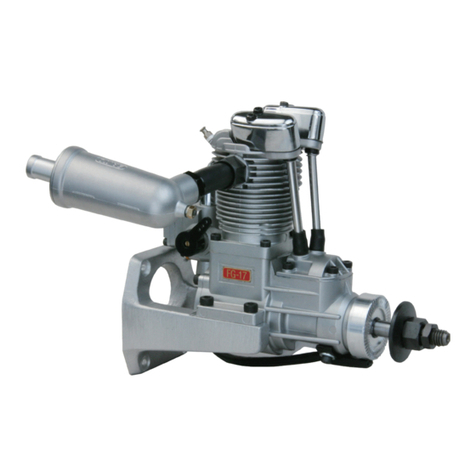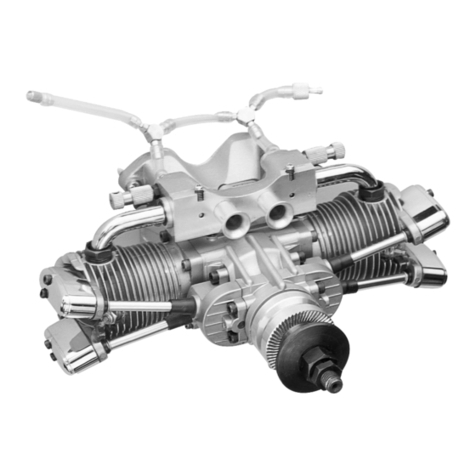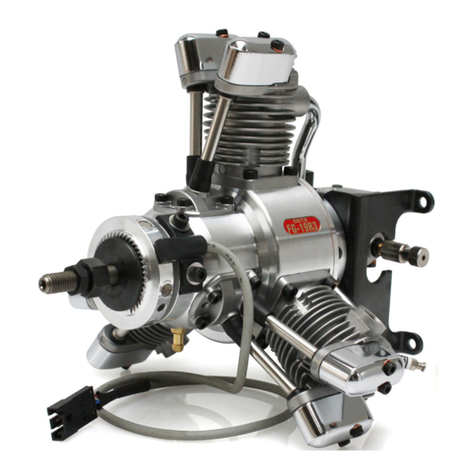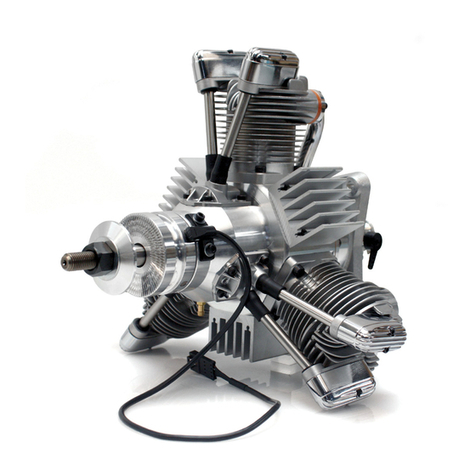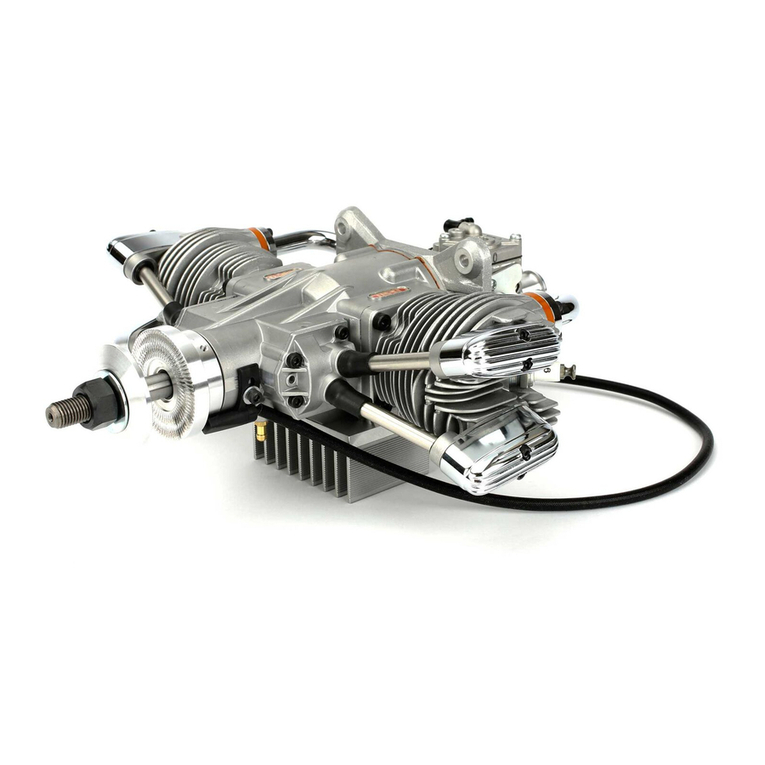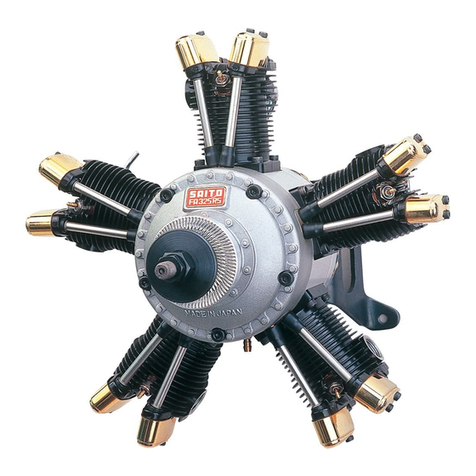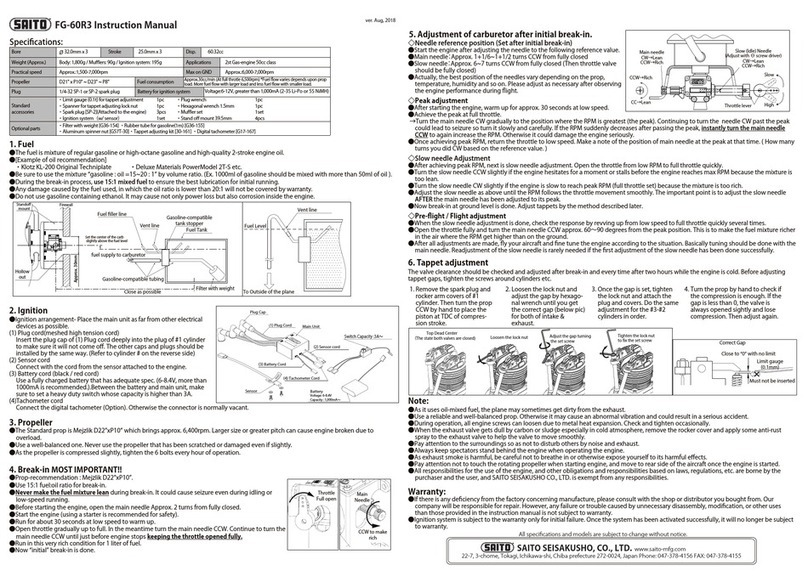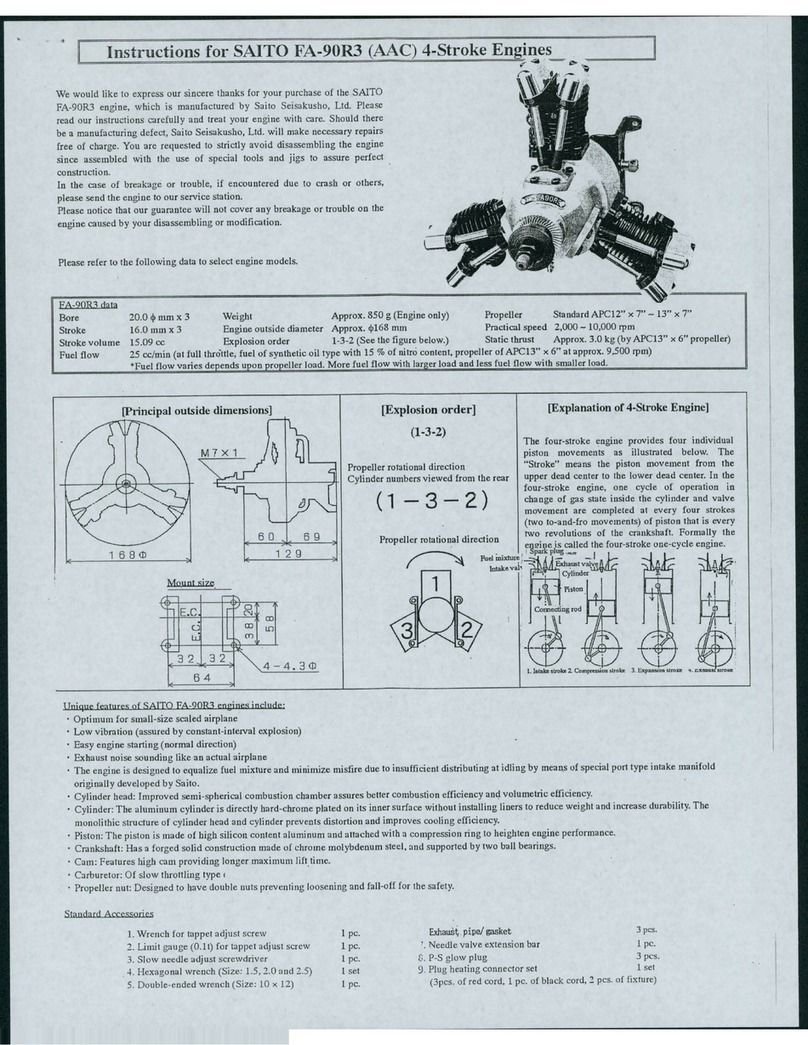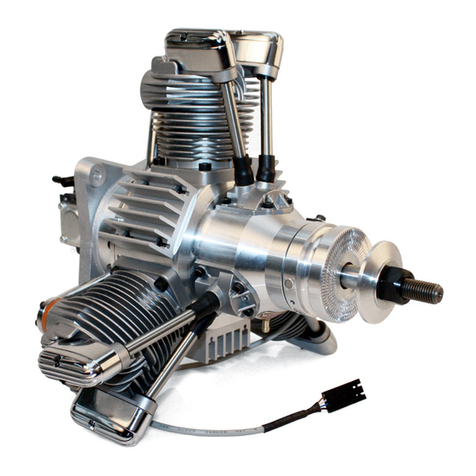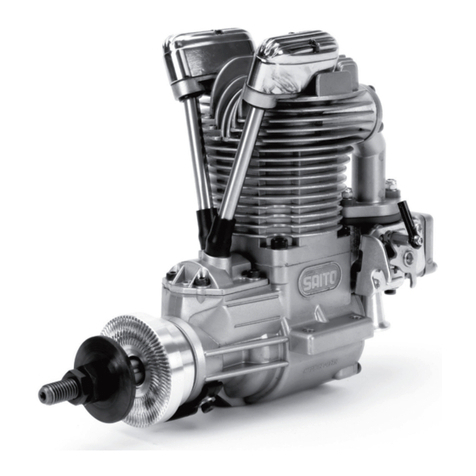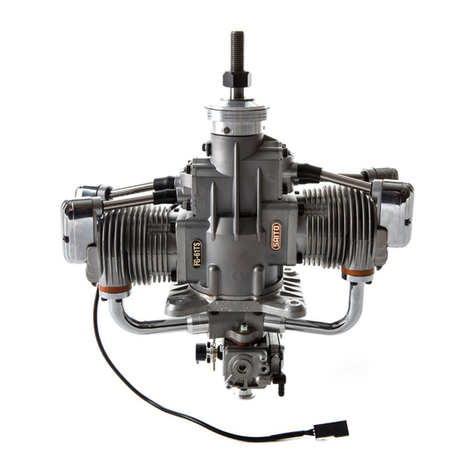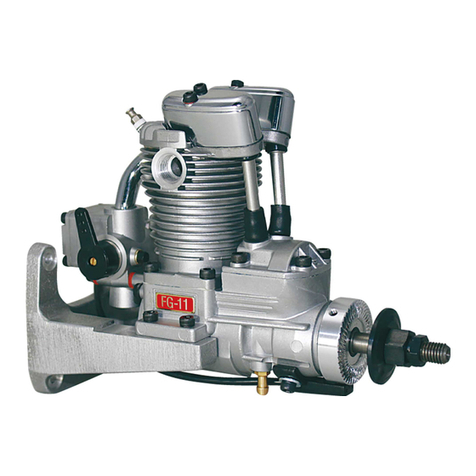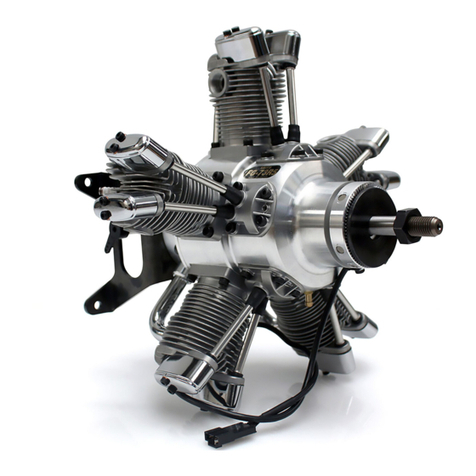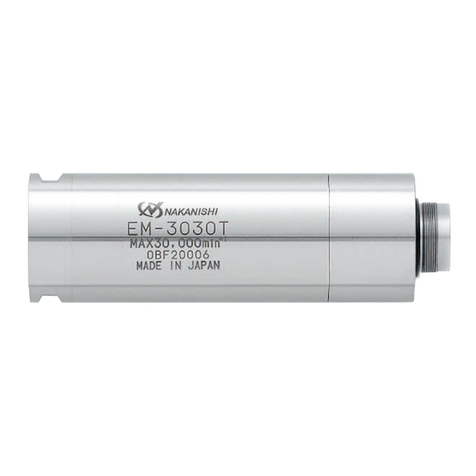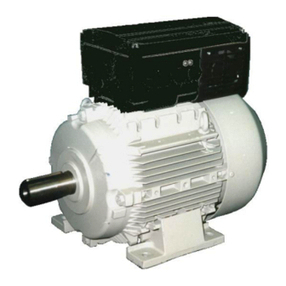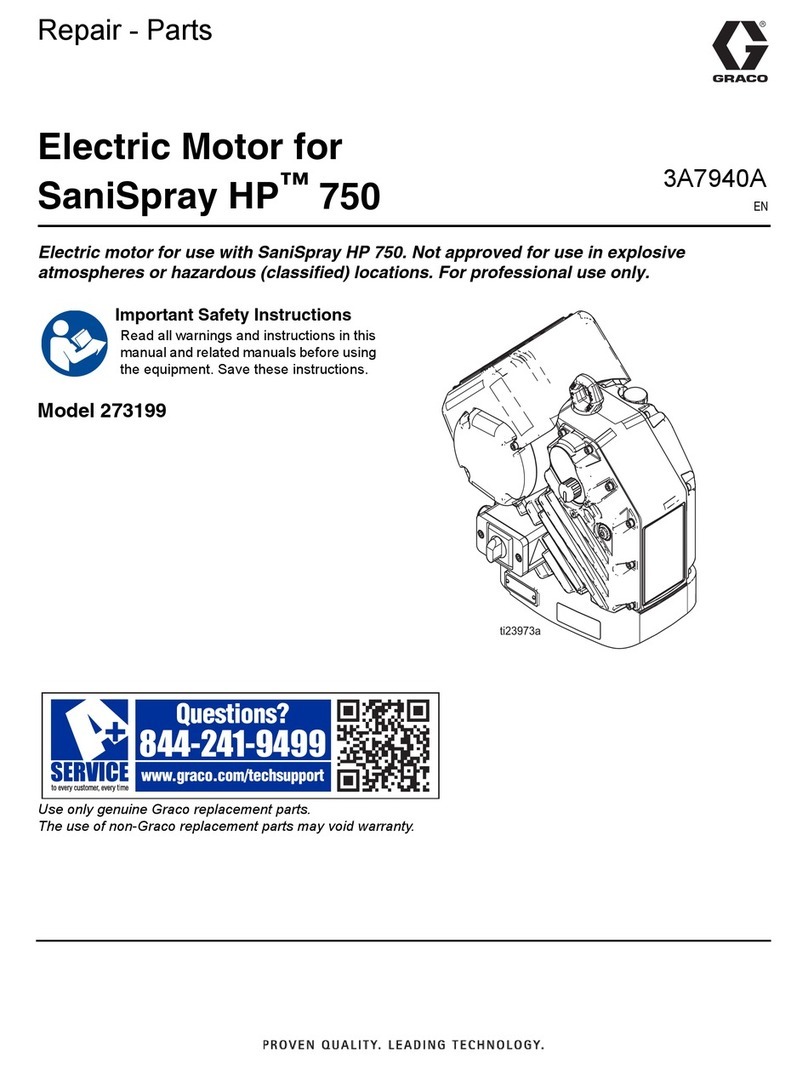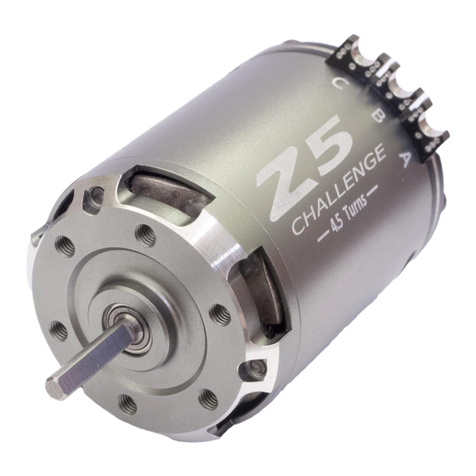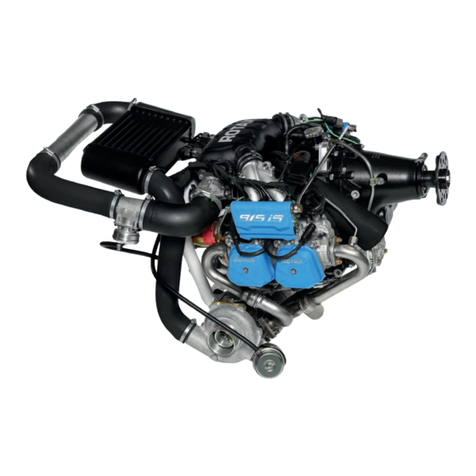
Engine Parts
Identification
It is important to be able to identify the
parts of your Saito engines. Attached
you will find an exploded view of a
Saito 4-stroke engine, as well as charts
that include part numbers and
descriptions. This will assist you in
easily and rapidly identifying the
respective parts of your Saito engine.
Support Equipment
Thefollowingitems,whicharenotincluded
withyourSaitoengine,arenecessaryin
ordertooperatethemodelengine:
1. Fuel. For maximum protection and
longevity of Saitoengines, Saito
recommends a fuelcontaining 20% oil
and 10-15% nitro methane. If this blend is
not readily available, the next best
selection is a high quality 2-cycle glow
fuel,such as Hangar 9Aero-Blend,
Omega,Cool Power, K&B, Power
Master, etc.Use of fuels composed
entirely of castoroil is not recommended.
Amix of synthetic-castor oilis acceptable
and can be found in the various fuels
described above.
2. Propeller. Refer to the "Propeller
Selection" chart, located on page 16, to
determine the best initial propeller for
your particular application. Propellers
should be balanced prior to use.
3. Glow Plug Battery. Your glow
plug may be properly heated by
several different sources. The Hangar 9
Power Panel (HAN106), when
accompanied by a 12-volt Sealed Lead
Acid Battery (HAN102) and a Glow
Plug Locking Socket (HAN120) is an
ideal source of heat for your glow
plug. A conventional 1.5-volt heavy-
duty dry cell battery with a Glow Plug
Locking Socket (HAN120) or alligator
clips may also be used. Additionally,
there are several very good glow-
starters (nickel cadmium-powered
glow plug igniters) that work well.
4. Glow Plug Wrench. Used to
removeand tightenglow plugs.The
Hangar9 Long Reach PlugWrench
(HAN2510) is an excellent wrench to
utilize, as a longer shaft may be necessary
to access the glowplug.This depends
mostlyupon engineinstallation.
5. Manual or Electric Starter. For
manual starts, a “chicken stick” is
highly recommended. Never use
your fingers to start any model engine.
To do so invites injury. There are a
variety of electric starters on the
market. The Hangar 9 12V heavy-duty
Super Starter (HAN110) will work
perfectly on all Saito engines.
6. Tachometer. The use of a
tachometer for setting the high-speed
needle valve prior to flight is
encouraged. It will also be helpful
when setting the idle adjustment of the
carburetor(s).
S U P P O R T E Q U I P M E N T 3
Saito Single Cyl Manual 9-00 9/11/00 10:06 AM Page 5
